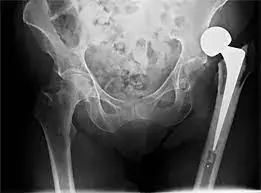- Home
- Medical news & Guidelines
- Anesthesiology
- Cardiology and CTVS
- Critical Care
- Dentistry
- Dermatology
- Diabetes and Endocrinology
- ENT
- Gastroenterology
- Medicine
- Nephrology
- Neurology
- Obstretics-Gynaecology
- Oncology
- Ophthalmology
- Orthopaedics
- Pediatrics-Neonatology
- Psychiatry
- Pulmonology
- Radiology
- Surgery
- Urology
- Laboratory Medicine
- Diet
- Nursing
- Paramedical
- Physiotherapy
- Health news
- Fact Check
- Bone Health Fact Check
- Brain Health Fact Check
- Cancer Related Fact Check
- Child Care Fact Check
- Dental and oral health fact check
- Diabetes and metabolic health fact check
- Diet and Nutrition Fact Check
- Eye and ENT Care Fact Check
- Fitness fact check
- Gut health fact check
- Heart health fact check
- Kidney health fact check
- Medical education fact check
- Men's health fact check
- Respiratory fact check
- Skin and hair care fact check
- Vaccine and Immunization fact check
- Women's health fact check
- AYUSH
- State News
- Andaman and Nicobar Islands
- Andhra Pradesh
- Arunachal Pradesh
- Assam
- Bihar
- Chandigarh
- Chattisgarh
- Dadra and Nagar Haveli
- Daman and Diu
- Delhi
- Goa
- Gujarat
- Haryana
- Himachal Pradesh
- Jammu & Kashmir
- Jharkhand
- Karnataka
- Kerala
- Ladakh
- Lakshadweep
- Madhya Pradesh
- Maharashtra
- Manipur
- Meghalaya
- Mizoram
- Nagaland
- Odisha
- Puducherry
- Punjab
- Rajasthan
- Sikkim
- Tamil Nadu
- Telangana
- Tripura
- Uttar Pradesh
- Uttrakhand
- West Bengal
- Medical Education
- Industry
Higher rates of hemiarthroplasty dislocation observed in patients with preoperative CEA less than 38.5 & ADWR less than 34.5

Hip hemiarthroplasty dislocation is a devastating complication. Among other preoperative risk factors, acetabular morphology has been rarely studied. Luigi Zanna et al conducted a study to evaluate the influence of preoperative native acetabular morphology on hemiarthroplasty dislocation. The study was conducted at Department of Orthopaedic Surgery, Aou Careggi, University Hospital of Florence, Florence, Italy. It has been published in “The Journal of Arthroplasty.”
The authors retrospectively reviewed 867 patients who underwent hip hemiarthroplasty for femoral neck fracture. The 380 included patients were treated with an anterior-based muscle-sparing approach. The central-edge angle (CEA) and acetabular depth-to-width ratio (ADWR) of the fractured hip were measured preoperatively on the anteroposterior pelvic view. Receiver operating characteristic curves were performed to analyze the optimal cutoff for CEA and ADWR. Hemiarthroplasty dislocation occurred in 18 patients (4.7%), and the remaining 362 patients were used as the control group.
Key findings of the study were:
• No significant differences in terms of sex, age, dementia, neuromuscular disease, and body mass index were found between the 2 groups.
• Eighteen patients (4.7%) sustained a hip dislocation during the study period, 14 (77.8%) were anterior and 4 (22.2%) were posterior.
• The 18 patients who had a hip dislocation had significantly smaller mean CEA than the control group (P = .0001) (mean 36.1 ± 7.5 and 43.2 ± 5.6 , respectively) as well as ADWR (mean 34 ± 6 versus 37 ± 4, respectively) (P = .001).
• Patients who had neurological comorbidities such as dementia (P = .967) and neuromuscular diseases (P = .382) did not show a higher rate of dislocation.
• Using the receiver operating characteristic analysis, we report significant cutoffs of 38.5 for CEA (P = .0001) and 34.5 for the ADWR (P = .017)
The authors commented – “In conclusion, excluding the dislocation risk factor related to the surgical approach, we advise measuring the CEA and ADWR on preoperative radiographs. In cases of either a CEA smaller than 38.5 or an ADWR smaller than 34.5 or a combination of both, changing the native acetabular morphology implanting a THA might help reduce the risk of dislocation and prevent further operations in an elderly and frail patient. However, when addressing elderly patients who have multiple comorbidities and a short life expectancy, even when they possess preoperative morphological risk factors for a hemiarthroplasty dislocation, the decision to perform a THA instead of a hemiarthroplasty needs to be a multi disciplinary decision.”
Further reading:
Acetabular Morphology Predicts the Risk of Dislocation Following Hemiarthroplasty for Femoral Neck Fractures in the Elderly
Luigi Zanna, Matteo Innocenti et al
The Journal of Arthroplasty 2023
https://doi.org/10.1016/j.arth.2023.02.042
MBBS, Dip. Ortho, DNB ortho, MNAMS
Dr Supreeth D R (MBBS, Dip. Ortho, DNB ortho, MNAMS) is a practicing orthopedician with interest in medical research and publishing articles. He completed MBBS from mysore medical college, dip ortho from Trivandrum medical college and sec. DNB from Manipal Hospital, Bengaluru. He has expirence of 7years in the field of orthopedics. He has presented scientific papers & posters in various state, national and international conferences. His interest in writing articles lead the way to join medical dialogues. He can be contacted at editorial@medicaldialogues.in.
Dr Kamal Kant Kohli-MBBS, DTCD- a chest specialist with more than 30 years of practice and a flair for writing clinical articles, Dr Kamal Kant Kohli joined Medical Dialogues as a Chief Editor of Medical News. Besides writing articles, as an editor, he proofreads and verifies all the medical content published on Medical Dialogues including those coming from journals, studies,medical conferences,guidelines etc. Email: drkohli@medicaldialogues.in. Contact no. 011-43720751


